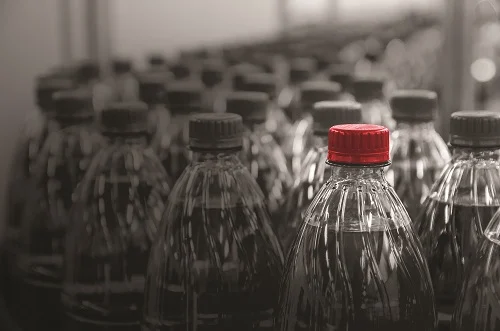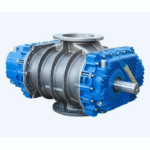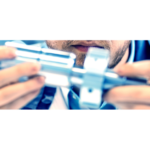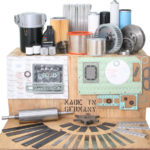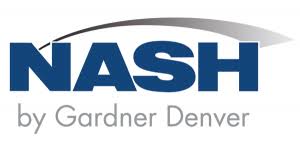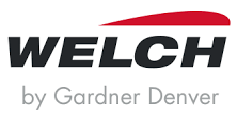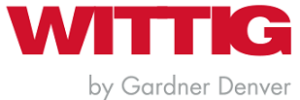In the competitive world of PET bottle blowing, every efficiency gain and cost-saving measure counts. Every bottle, every second of every production run, every cubic metre of compressed air – it all matters. Such fine margins for success makes machine efficiency vitally important, so where performance can be optimised, it should be.
Consequently, any stakeholder looking to select high pressure compressor solutions for their PET bottling plant should be aware of the factors that may affect their compressor’s performance. But what are these factors?
The Environment
It is important to be aware of the environment in which the compressor is installed. Ambient temperature, relative humidity and even altitude can affect the compressor’s performance by more than you might think.
The temperature of the air dictates its humidity – the amount of water vapour it can hold. As temperature and humidity rises, so does the likelihood of water appearing in the compressor, to the extent that it affects overall performance.
Because water vapour has less mass than air, its presence will reduce the density of the air in the compressor, which in turn reduces flow and power. For high pressure applications such as bottle blowing, this increase in humidity can lead to a marked difference in performance.
High Pressure reciprocating oil-free compressors integrate high efficiency water-cooled motors to alleviate these risks. While air-cooled motors can de-rate or fail in harsh environments, a water-cooled motor does not rely on a compressor’s environmental surroundings to maintain performance. Combined with IP56 protection, these water-cooled motors are therefore able to run reliably where other air cooled motors and compressor systems may struggle.
Sufficient Capacity
According to the Carbon Trust, generating compressed air accounts for 10 per cent of total energy costs in industry. With this in mind, ensuring energy wastage is kept to an absolute minimum should be a key concern for all operators, including bottling plant owners.
Consequently, it is important to know the capacity required before specifying a high pressure compressor solution – how many bottles need blowing per hour, at what size, and at what pressure. In fact, many purchasers select a compressor that is oversized for the application, both in terms of physical unit size and the volume of air generated in relation to system demand.
Being aware of compressor demands is therefore crucial to choosing a suitable unit and avoiding inefficiencies, unwanted downtime and increases in total cost of ownership. Indeed, our oil free experts can provide a service to help with this, offering audits that analyse a site’s compressed air demands and help size an appropriate compressor for the customer’s specific needs.
Pure Air
Correct specification does not only mean providing a compressor of an appropriate size. As compressed air comes directly into contact with the bottle during the production process, this air must adhere to air purity standard ISO 8573 – the standard governing compressed air purity and quality.
This is vital, as any contaminants – such as water, oil or solid particles – may lead to product spoilage or ill-health if ingested by the end user. In turn, this could lead to reputational damage, financial costs and disruption to the supplier’s production processes while any fault is found and fixed.
Taking this into account, high pressure compressors are intrinsically oil-free within the compression process, with absolutely no risk of process contamination. This means the compressor can deliver the highest quality compressed air in terms of air purity, giving the supplier complete peace of mind.
Total Cost of Ownership
Site owners and operators must also bear in mind that up-front purchasing costs are not the only thing to bear in mind when specifying a compressor. Total cost of ownership is a huge factor – whether the compressor is reliable, energy-efficient and comes with a good service contract. Over time, a compressor that meets these three criteria will generate savings larger than any made at the point of purchase by opting for a cheaper, less efficient model.
With this in mind, all Belliss & Morcom oil free air compressors feature a unique shaftless motor design that avoid the inefficiencies of belt drive systems with friction and belt slippage losses, couplings or gearboxes, and instead transfers 100 per cent of motor output power to the compressor’s running gear. This is in contrast to belt drive models, which operate with inefficiencies of between 7 to 12 per cent and can cost operators up to £50,000 in wasted energy every year, year on year. Furthermore, Belliss & Morcom models suffer zero degradation over the equipment’s lifetime, meaning production processes are not disrupted by the need to replace worn-down parts.
Alongside these efficiencies gains, Belliss & Morcom’s High Pressure compressors are also covered under the market-leading BellissXtra Ultimate Protection Programme. The programme ensures compressor owners are fully budgeted against unforeseen shutdowns throughout the compressor‘s lifetime, with access to 100 per cent original spare parts and the latest technology direct from the factory. Combined with scheduled maintenance from highly skilled factory-trained technicians and yearly servicing, this plan results in minimised downtime, guaranteed long-term reliability and greater peace of mind.

